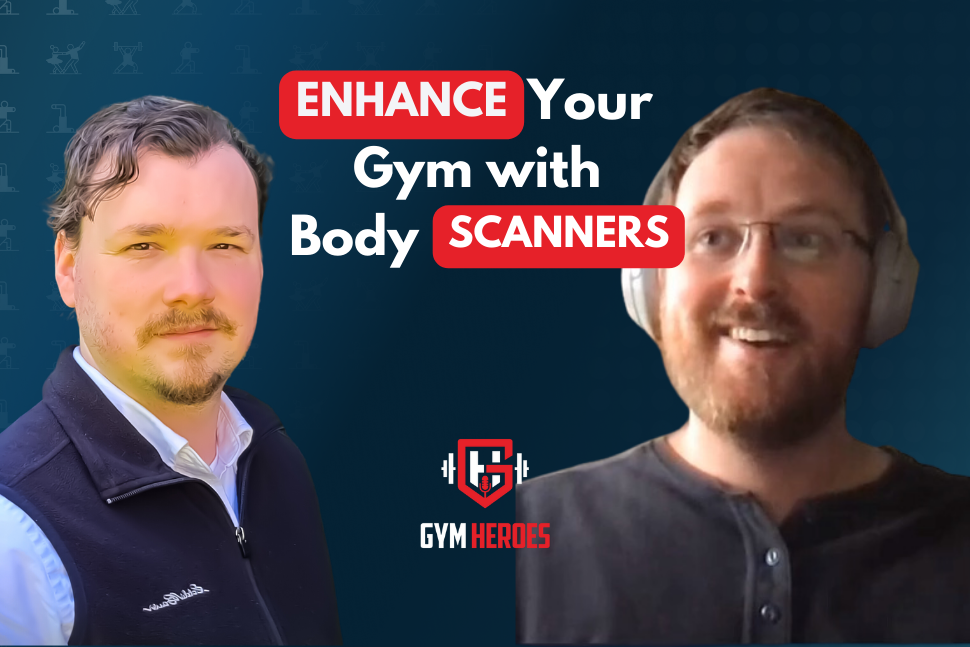Our hero today is Cameron Haines, founder of Mobile Body Scans. Understanding your body fat to muscle ration is really important to know if your workout programs are successful. DEXA scans are too expensive and too infrequent, and the stuff you can buy off Amazon is too inaccurate.
In this installment, Cameron unpacks how gyms can serve their most serious members with monthly body scans with the much more accurate Mobile Body Scan machines.
Mobile Body Scanning Technology
Cameron Haines elaborates on the concept of mobile body scanning. They use InBody 570 machines, which are highly accurate and user-friendly. Unlike traditional DEXA scans, the mobile body scanning service is accessible to gyms through a hire model, eliminating the need for significant capital investment.
By providing accurate and comprehensive body composition data, these machines enable gym members to track their progress and adjust their fitness routines accordingly.
Comparing Mobile Body Scans to DEXA
Cameron discusses the differences between mobile body scans and DEXA scans. While DEXA has been the traditional gold standard for body composition assessment, mobile body scans offer advantages such as speed, user-friendliness, and the ability to be conducted more frequently.
Additionally, the absence of radiation in mobile body scans makes it a safer and more accessible option for regular use, compared to the limitations of DEXA scans.
Impact on Customer and Trainer Experience
One of the significant impacts of mobile body scanning technology is its effect on the customer and trainer experience. For gym owners and trainers, integrating these machines into their facilities enhances client-trainer relationships, improves data-driven program design, and provides valuable insights into clients’ fitness journeys. By offering regular body scans, trainers and members can make informed decisions to optimize their training and nutrition plans.
Frequency of Body Scans
Haines explains the recommended frequency for body scans, emphasizing the importance of maintaining a suitable balance. While DEXA scans are typically limited to a few times a year, mobile body scans can be conducted more frequently, enabling users to track changes and adjust their fitness goals accordingly. The flexibility in scan frequency caters to various fitness objectives and adaptation periods, ensuring accurate and timely results for individuals.
Differentiating from At-Home Devices
The discussion also covers the crucial differences between mobile body scans and at-home body composition devices available on the market. Haines points out the limitations of at-home devices, highlighting that most of them only measure lower body composition, providing an incomplete picture of one’s overall body composition. In contrast, mobile body scan machines offer comprehensive measurements necessary for accurate assessments.
Considerations for Gym Owners
For gym owners considering the integration of mobile body scanning technology, Haines underscores the balance between the size of the gym and the importance placed on the body composition data.
While midsize gyms might find the machines more beneficial due to higher demand, the hire model offered by Mobile Body Scans presents an alternative that makes the technology accessible to smaller facilities.
Accessing Mobile Body Scanning Services
Cameron Haines also provides information about accessing Mobile Body Scans’ services, including their website and social media platforms. Additionally, he shares plans for licensing and teaching methods related to body scanning technology, indicating opportunities for businesses to maximize the potential of their machines.
Conclusion
Cameron Haines highlights the significant impact of mobile body scanning technology on gym member experience, trainer-client relationships, and fitness program effectiveness. By understanding the value and capabilities of these machines, gym owners and fitness enthusiasts can leverage this technology to enhance their fitness journeys and achieve optimal results.
Mobile body scanning technology represents a valuable asset in the evolution of the fitness industry, empowering individuals to make informed decisions and track their progress accurately.
 Gym Owner Statistics: The State of Gyms, Member Trends, and Usage Data
Gym Owner Statistics: The State of Gyms, Member Trends, and Usage Data




 EN (English)
EN (English)
 JA (日本語)
JA (日本語)